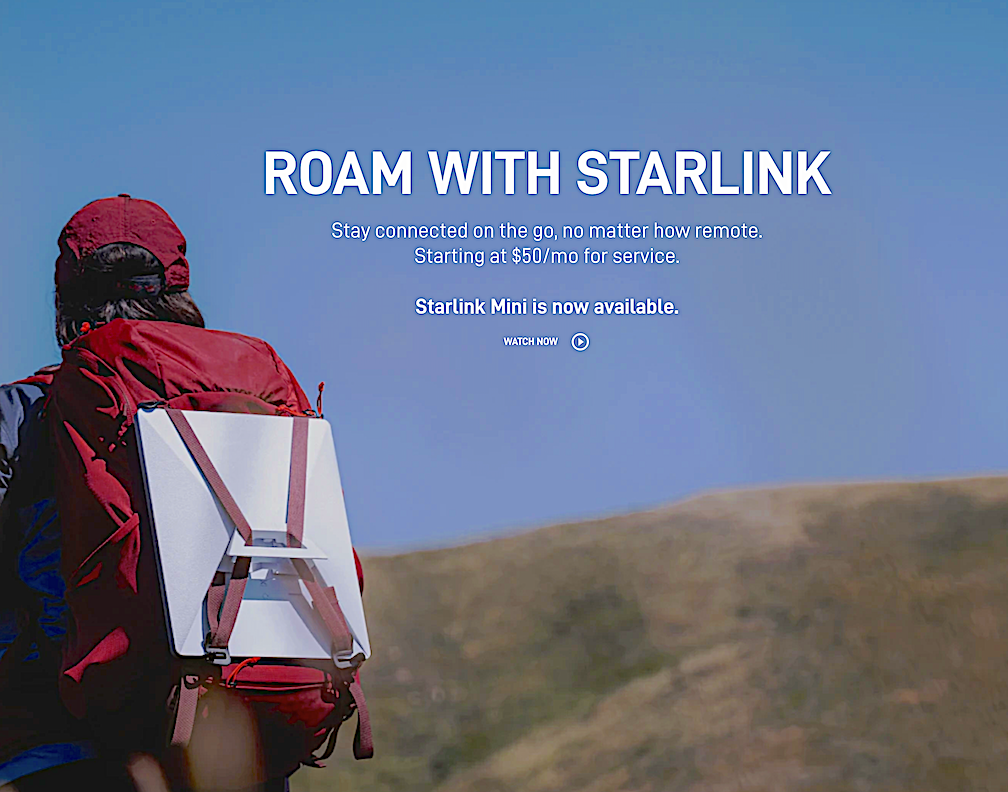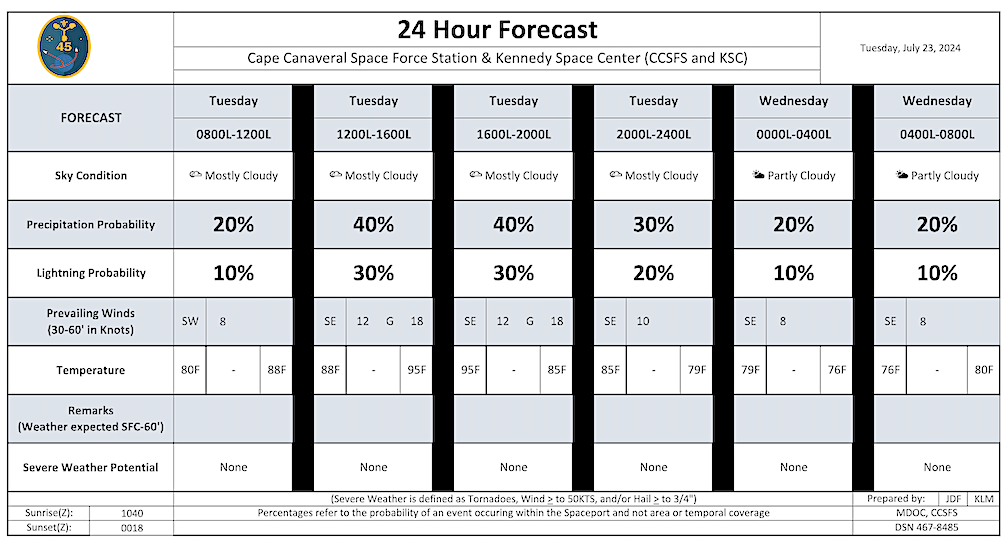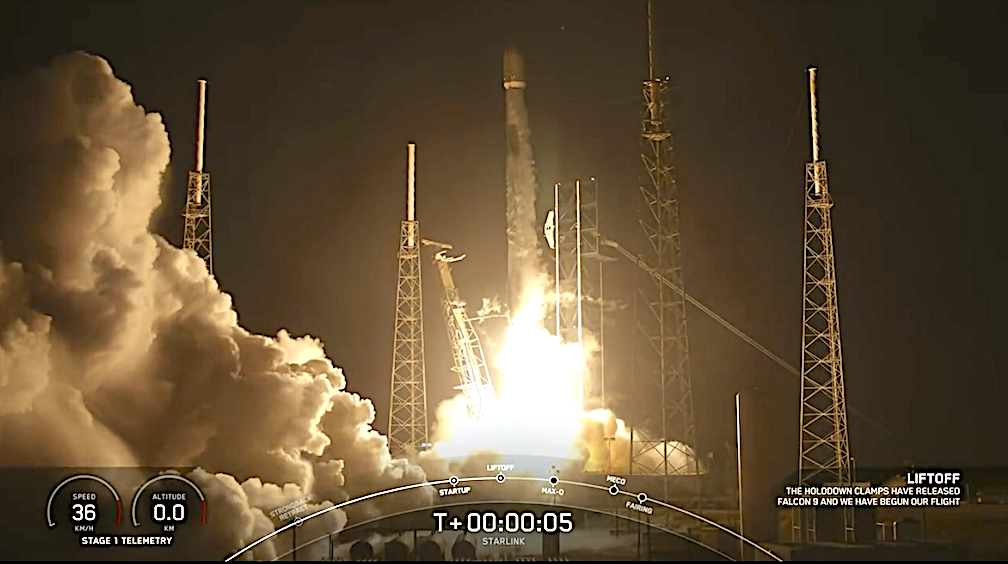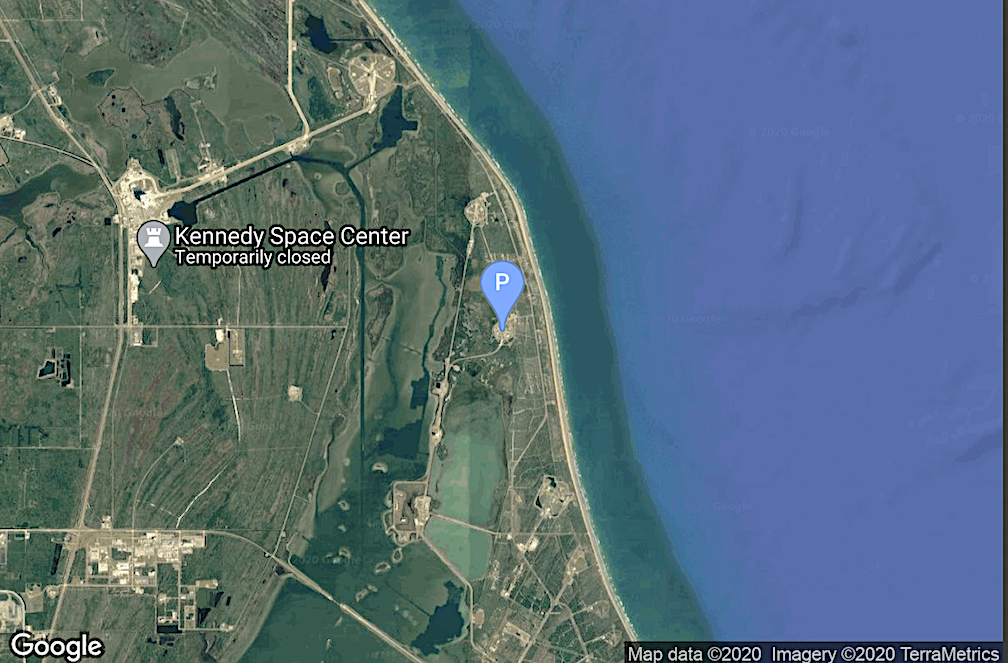
Making up for lost time SpaceX’s Falcon 9 successfully launched on Saturday, July 27 at 1:45 a.m. ET, 23 Starlink satellites to low-Earth orbit from Launch Complex 39A (LC-39A) at NASA’s Kennedy Space Center in Florida.

This was the 17th flight for the first stage booster supporting this mission, which previously launched CRS-24, Eutelsat HOTBIRD 13F, OneWeb 1, SES-18 and SES-19, and now 13 Starlink missions.
This is the start of a very ambitious schedule in which two launches are slated for Sunday July 28 from both coasts.
SpaceX is targeting Sunday, July 28 for a Falcon 9 launch of 21 Starlink satellites, including 13 with Direct to Cell capabilities, to low-Earth orbit from Space Launch Complex 4 East (SLC-4E) at Vandenberg Space Force Base in California. Liftoff is targeted for 12:24 a.m. PT, with backup opportunities available until 4:14 a.m. PT. If needed, additional opportunities are available on Monday, July 29 starting at 12:53 a.m. ET.
A live webcast of this mission will begin about 15 minutes prior to liftoff, which you can watch here and on X @SpaceX.
This is the 17th flight for the first stage booster supporting this mission, which previously launched NROL-87, NROL-85, SARah-1, SWOT, Transporter-8, Transporter-9, NROL-146, and nine Starlink missions. Following stage separation, the first stage will land on the Of Course I Still Love You droneship, which will be stationed in the Pacific Ocean.
SpaceX is targeting Sunday, July 28 for a Falcon 9 launch of 23 Starlink satellites to low-Earth orbit from Space Launch Complex 40 (SLC-40) at Cape Canaveral Space Force Station in Florida. Liftoff is targeted for 12:17 a.m. ET, with backup opportunities available until 4:01 a.m. ET. If needed, additional opportunities are also available on Monday, July 29 starting at 12:20 a.m. ET.
A live webcast of this mission will begin about five minutes prior to liftoff, which you can watch here and on X @SpaceX.
This is the 14th flight for the first stage booster supporting this mission, which previously launched Crew-5, GPS III Space Vehicle 06, Inmarsat I6-F2, CRS-28, Intelsat G-37, NG-20, and seven Starlink missions. Following stage separation, the first stage will land on the A Shortfall of Gravitas droneship, which will be stationed in the Atlantic Ocean.
UPDATE SpaceX reports corrections now made smallsat Starlink launches scheduled for July 27 and 28

Dates and launches are still in flux but it does appear that there will may be two launches in successive days, Saturday and Sunday, for SpaceX the first taking place at Cape Kennedy in Florida, and the Sunday launch from Cape Canaveral Space Force Station. Everything is subject to change, of course.
SpaceX is targeting the Saturday, July 27 for a Falcon 9 launch 10-9 of 23 Starlink satellites to low-Earth orbit from Launch Complex 39A (LC-39A) at NASA’s Kennedy Space Center in Florida. Liftoff is targeted for 12:21 a.m. ET, with backup opportunities available until 4:21 a.m. ET. If needed, additional opportunities are also available on Sunday, July 28 starting at the same time.
SpaceX reports they have corrected the issue that occurred on July 11 that caused the leak. According to SpaceX’s anomaly investigation, which was overseen by the U.S. Federal Aviation Administration (FAA) the leak “led to the excessive cooling of engine components, most importantly those associated with delivery of ignition fluid to the engine,” the company wrote in Thursday’s update. “As a result, the engine experienced a hard start rather than a controlled burn, which damaged the engine hardware and caused the upper stage to subsequently lose attitude control.”
The forecast calls for a temperature of 81°F, light rain, 39% cloud cover, a wind speed of 6mph and 0.38in of rain.
A live webcast of this mission will begin about five minutes prior to liftoff, which you can watch here and on X @SpaceX.
This is the 17th flight for the first stage booster supporting this mission, which previously launched CRS-24, Eutelsat HOTBIRD 13F, OneWeb 1, SES-18 and SES-19, and 12 Starlink missions. Following stage separation, the first stage will land on the Just Read the Instructions droneship, which will be stationed in the Atlantic Ocean.
SpaceX launch of smallsats for the Starlink constellation now planned for July 26

SpaceX plans to launch the Starlink Group 10-4 mission on Friday, July 26, at 12:14 AM EDT (04:14 UTC) from SLC-40 at the Cape Canaveral Space Force Station in Florida, pending confirmation from the FAA.
The Federal Aviation Administration (FAA) received a request from SpaceX on Monday (July 15) to continue launching Falcon 9 flights during the investigation following July 11 failure of the Starlink 9-3 mission in which the rocket’s upper stage experienced a liquid oxygen leak.
The forecast calls for a temperature of 82°F, scattered clouds, 32% cloud cover and a wind speed of 13mph.

As of June 2024, there are 6,219 Starlink satellites in orbit, of which 6,146 are working, according to Astronomer Jonathan McDowell who tracks the constellation on his website.
Space Launch Complex 40 has launched 252 rockets, including 252 orbital launch attempts, while Cape Canaveral, Florida, has been the site for 964 rocket launches.
Following stage separation, the booster will land on a droneship in the Atlantic Ocean.
SpaceX gears up for July 24 launch of smallsats for the Starlink constellation

A SpaceX Falcon 9 rocket will launch another batch of Starklink V2 Mini satellites to low Earth orbit on Wednesday, July 24, 9:14 PM – 1:44 AM PDT from SLC-40 Cape Canaveral’s SFS, Florida.
The launch is pending FAA approval. The launch was delayed from July 14 as a result of Starlink 9-3 failure and faces the possibility of further delay.

The forecast calls for a temperature of 82°F, few clouds, 11% cloud cover and a wind speed of 15mph.
Following stage separation, the booster will land on a droneship in the Atlantic Ocean.
SpaceX is ready to begin launches with a July 23 Starlink smallsat Group 10-4 launch

There are notices that SpaceX is planning a July 23rd launch of a batch of satellites for the Starlink mega-constellation pending FAA’s approval following the failure of the Starlink Group 9-3 mission. Scheduled for 9:14 PM – 1:44 AM PDT from SLC-40 Cape Canaveral’s SFS, Florida.
The Federal Aviation Administration (FAA) received a request from SpaceX on Monday (July 15) to continue launching Falcon 9 flights during the investigation following July 11 failure of the Starlink 9-3 mission in which the rocket’s upper stage experienced a liquid oxygen leak.

Space Launch Complex 40 has launched 252 rockets, including 252 orbital launch attempts, while Cape Canaveral, Florida, has been the site for 964 rocket launches.
The forecast calls for a temperature of 79°F, scattered clouds, 40% cloud cover and a wind speed of 5mph.FAA to make a public safety determination, which would allow the company to resume launches.
